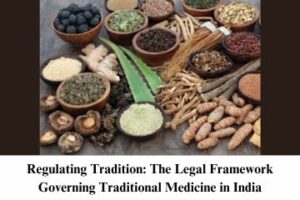The legal aspect of Poison
- Define Poison? Classification of Poison.
- Classification on the basis of their mode of action.
- How is poisoning diagnosed?
- What are the symptoms of Opium poisoning and what is its cure?
- What are the duties of a Medical officer in case of suspected poisoning?
Poisons are substances that can cause disturbances to organisms, usually by chemical reaction or other activity on the molecular scale, when a sufficient quantity is absorbed by an organism. Any substance is dangerous to live organisms that if applied internally or externally, destroys the action of vital functions or prevents the continuance of life.
Those substances which, when applied to the organs of the body, are capable of altering or destroying, in a majority of cases, some or all of the functions necessary to life, are called poisons.
As per law, any substance, irrespective of its quality or quantity, when given with an intention to endanger, injure, or kill a person is called poison.
As per Section 284 of IPC – Negligent conduct with respect to poisonous substance
whoever does, with any poisonous substance, any act in a manner so rash or negligent as to endanger human life, or to be likely to cause hurt or injury to any person, or knowingly or negligently omits to take such order with any poisonous substance in his possession as is sufficient to guard against any probable danger to human life from such poisonous substance, shall be punished with imprisonment of either description for a term which may extend to six months, or with fine which may extend to one thousand rupees, or with both.
Classification – on the basis or their mode of action –
- Corrosives –
- Acids –
- Inorganic: HCL, HNO3, H2SO4 (Oil of vitriol)
- Organic: Oxalic Acid, Phenol
- Alkalies – NaOH, Ca(OH)2, KOH
- Metallic Salts: Zinc Chloride, Ferrus Chloride, Chromates, and Bichromates of alkalis
- Acids –
- Irritants –
- Inorganic
- Non metallic – Phosphorus, chlorine, bromine, iodine
- Metallic – Arsenic, Lead, antimony, bismuth, zinc, silver, mercury, copper
- Organic
- Vegetable – Castor oil seed, croton oil, madar, and aloes,
- Animal – Cantherides, snakes, and insect bites
- Mechanical – Diamond dust, powdered glass, and hair
- Inorganic
- Systemic
- Affecting the nervous system i.e. Neurotics
- Affecting the brain
- Somniferous: Reduce pain and induce sleep : Opium and its alkaloids barbiturate
- Inebriant: They intoxicate and induce symptoms of excitement as well as narcosis: Alchohol, ether, chloroform
- Deliriant: Cerebral poisons which cause delirium i.e. imaginary talks, images, feelings etc.: Dhatura, belladonna, hysosymous, cannabis indica
- Affecting the spinal cord: Nux vomica, gelsemium
- Affecting the peripheral nerves: Curare and conium
- Affecting the brain
- Affecting the cardiovascular system – Aconite, digitalis, oleander, tobacco, and hydrocyanic acid
- Affecting the respiratory system – aka Asphyxiants: cause respiratory failure: Poisonous irrespirable gases such as Carbon monoxide, phosphine
- Affecting the nervous system i.e. Neurotics
Diagnosis of poisoning –
- In the living –
- If the onset of symptoms is sudden – usually after a meal, drink, or a dose of medicine. The patient’s habits, working conditions, and daily activities must be analyzed.
- Sometimes symptoms are uniform in character and rapidly increase in severity followed by death or early recovery. One poison may be neutralized by other or increase the potency of another. For example, barbiturates with alcohol.
- Persons taking the same food display the same symptoms.
- Detection of poison in food, medicine, vomit, urine, or stool.
- In the dead –
- Post mortem appearance
- External Examination – odour, stain, skin condition
- Internal Examination – Hyperaemea (redness of mucus), softning, ulceration, perforation
- Chemical analysis – Urine, blood, stains, viscera
- Moral and circumstantial evidence
- Post mortem appearance
General Treatment of poisoning:
- Removal of unabsorbed poison – cleaning, suction, stomach wash
- Antidote for neutralizing absorbed poison – activated charcoal, chelates
- Removal of absorbed poison and its intermediary substances – catharsis, enema
- Symptomatic relief
Symptoms of Opium Poisoning –
The effect of opium upon the respiration is very important, and therein lies its danger as a lethal agent. In very small doses it is said to stimulate respiration, but large doses powerfully depress breathing, and in fatal opium poisoning death is usually due to asphyxia through centric respiratory paralysis. In a very short time, under a poisonous dose, drowsiness comes on, soon followed by profound stupor. The patient becomes apparently quite senseless, and lies without other observable motion than that of respiration, which is very slow, and not unfrequently stertorous. A dark suffusion of the countenance comes on, with an utter want of expression. When a toxic dose of morphine or opium has been taken there occur symptoms which may be grouped under three stages:
- The first, or stage of excitation, may be absent; or if present, be of very short duration.
- In the second stage, depression speedily comes on with a full and slow pulse, suspension of the cerebral functions, overpowering drowsiness followed by a deep sleep with slow and stertorous breathing, suffused, flushed or cyanotic countenance, strongly contracted pupils, warm dry skin, and muscular prostration. The patient may be aroused by shaking, flagellation, or loud shouting, but as soon as undisturbed sinks again into a deep slumber. If he is not kept awake and breathing stimulated, he passes almost imperceptibly into the final or lethal stage.
- In the third or lethal stage coma is absolutely complete. The face, at first turgid or livid, becomes pale and the lips livid, the extremities are cold, the pupils minutely contracted (pin-point myosis), the dry skin gives way to the sweat of death, the breathing becomes progressively slower and slower, shallow and labored, until it finally ends in a soft or almost imperceptible respiration. Death then takes place from respiratory paralysis or asphyxia, though the heart stops almost immediately after breathing ceases.
Opium diminishes all the secretions except that of the sweat. Normal diaphoresis remains unabated or is increased. Opium causes retention, rather than suppression, of the urine, though the secretion of the urine is thought to be somewhat inhibited by the drug. Opium very pronouncedly checks the secretions of the intestines and arrests peristalsis, chiefly by stimulation of the splanchnic inhibitory nervous apparatus. The result is constipation. On the other hand toxic doses may paralyze the inhibition and thus stimulate peristalsis.
Opium moderately elevates temperature unless the dose is toxic. In that event, the body-heat is reduced. Opium limits tissue waste by decreasing the output of urea and other nitrogenous detritus.
Treatment of Opium Poisoning
The treatment of acute opium poisoning must be prompt and unremitting. There is no antidote to opium which can be relied on. Naloxone is a drug used to counter the effects of opioid overdose, for example heroin or morphine overdose. Naloxone is specifically used to counteract life-threatening depression of the central nervous system and respiratory system. The important indications are to evacuate the stomach, and to support the system in the state of prostration which follows the direct influence of the poison.
- Owing to the fact that the vomiting centers and the peripheral nerves of the stomach are depressed by toxic doses of opium, emetics do not act well. They should be tried, however, as well as other means of inducing vomiting, as tickling the throat, etc., but should not be relied upon.
- Washing out the stomach by lavage is to be preferred, and should be repeated at short intervals because morphine is readily eliminated from the blood-current into the stomach, and continuation of the poisoning may be maintained through its reabsorption. In the meantime a solution of potassium permanganate (3 to 5 grains in a half pint of water) should be given to destroy the morphine.
- Strong black coffee administered freely by mouth and by rectum.
- The all-important necessity is to keep the patient breathing, as depression of respiration is the most dangerous feature of opium poisoning. For this purpose strychnine sulphate (1/30 to 1/10 grain) preferably, or atropine or cocaine is to be used. Ammonia or alcohol may be needed to support both the heart and respiration. While death probably does not take place because of the deep sleep or narcosis, it is absolutely necessary to keep the patient awake in order to have his co-operation and voluntary effort to keep up breathing, and thus fight the depression of the respiratory centers. The patient should be walked between two attendants constantly, and flagellated with hot and cold wet towels, or switches, artificial respiration performed or the faradic current applied to the skin.
- To prevent reabsorption of the drug from the urine, catherization should be resorted to several times.
Duties of Medical Officer in case of suspected posioning
(Duties can be classified into legal and medical)
- Medical practitioner must be very cautious in giving his opinion about poisoning.
- Never give verbal or written opinion on mere suspicion.
- Maintain proper record of his findings and the treatment administered.
- In case of acute poisoning, he must try to find out the nature of the suspected poison so that he can administer appropriate treatment.
- In case of slow poisoning, he should make notes of the symptoms exhibited.
- Collect the vomitted matter and 24 hrs urine and get them analysed for poison.
- Call another collegue for consultation and the patient be removed to a hospital, where the doctor in charge should be informed about the suspicion.
- If the patient cannot be removed to the hospital, two trained nurses must be employed to take charge of the patient.
- Nust preserve all the evidence such as vomit, stomuch wash and samples of urine and faeces in clean glass jars, with appropriate labels, in strict lock and key.
- Must preserve any other evidence such as cup or spoon which has been used in taking the poison. Failing to do this might render the MP liable under S. 201 of IPC for making the evidence disappear.
- If an MP in private practice is suspicious that the case is of homicidal poisoning, he is bound by S. 39 of CrPC to inform this to the police or a magistrate. Non compliance is punishable under S. 176 of IPC. This rule does not apply if the MP suspects the case to be of suicidal poisoning. However, he is bound to divulge all the information if summoned under S. 175 of CrPC. If he conceals any information or gives false information, he will be liable under S. 193 and 202 of IPC.
To avoid these difficulties, it is suggested that all cases of poisoning be treated as homicidal poisoning and the question of suicide be decided by the police. - A MO of a Govt. hospital is required to report to the police all cases of poisoning whether accidental, suicidal, or homicidal.
- If the poisoning proves fatal, the doctor must never grant a death certificate but must report the facts of death to the nearest police officer.
Click here to read Law of Torts.
Click here to read IPC 1860.
Click here to read the Constitution of India.




